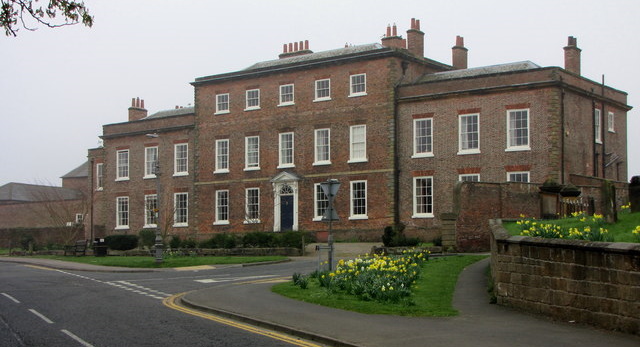
A plan to transform a historic Hambleton hall and its substantial grounds into a tourist attraction has generated passionate support and objections ahead of an expected decision later this week.
The Bell family, who have been Lords of the manor of Thirsk since the early 18th century, have seen their proposals to create a sculpture park, featuring monumental sculptures by artists of international fame, receive the backing of Hambleton District Council’s planning officers.
The authority’s planning committee will on Thursday consider a retrospective application for the statues, which are already in place on the 20-acre grounds of grade II* listed Thirsk Hall, as well as plans for a glamping site.
The proposals are part of wider plans for the estate, which include conversion of the old stables to create luxury holiday accommodation, developing a series of outside events, such as pop and classical music concerts, a drive-through cinema and a literary festival.
To make their ancestral home self-sustaining, the Bell family are also planning on hosting a number of open garden days, private house tours and wedding receptions, converting outbuildings for businesses, re-establishing the kitchen garden and launching a farm shop and cafe.In planning documents a family spokesman said: “Our approach is to build Thirsk Hall as a sustainable centre for the arts. By creating a historical and cultural destination within Thirsk we aim to bring further tourism to Thirsk as well as opportunities for more employment and opportunities for local businesses. Thirsk will be Yorkshire’s art, literature and music capital, like Malton is Yorkshire’s food capital.”A number of tourism businesses, including the nearby World Of James Herriot, and some residents have said the proposals could serve as a significant boost to the tourism-dependent town, “attracting an up-market clientele and increase visitor spend”.
Dr Helen Metcalfe said: “I cannot express how much I support this venture. The sculpture park would not only make very good use of the beautiful
grounds at Thirsk Hall, it would also add to the local area’s various existing arts, culture and heritage venues and in so doing generate further tourist interest in Thirsk and the surrounding area.”However residents living close to the hall have complained the scheme would lead to noise and light pollution, and aggravate traffic congestion and road safety.
Jodie Barker-Evans described area the outside Thirsk Hall as tranquil and highlighted it was a conservation area. She said: “We are extremely lucky here, and we are all appreciative of the quiet and serene nature our small community has. We will be affected by the inconvenience of the noise, by the increased traffic on the roads by our houses, and by the breach in privacy we will inevitably face as the field behind our homes becomes a tourist attraction.”
Despite the concerns, recommending approval of the proposals, the officers report concludes the scheme would aid the local economy and preserve the character and appearance of part of the conservation area.
History of Thirsk Hall
Thirsk Hall is a grade II* listed three-storey town house built in 1723 and extended in 1770 by York architect John Carr, who is best known for Buxton Crescent in Derbyshire and Harewood House, near Leeds.
The property has been in the Bell Family for nearly 300 years.
The house, which sits beside St Mary’s Church on the historic street of Kirkgate, is unique in its setting as to the east of the house is Thirsk town centre and to the west 20 acres of gardens, walled paddocks and a parkland.


Be the first to comment